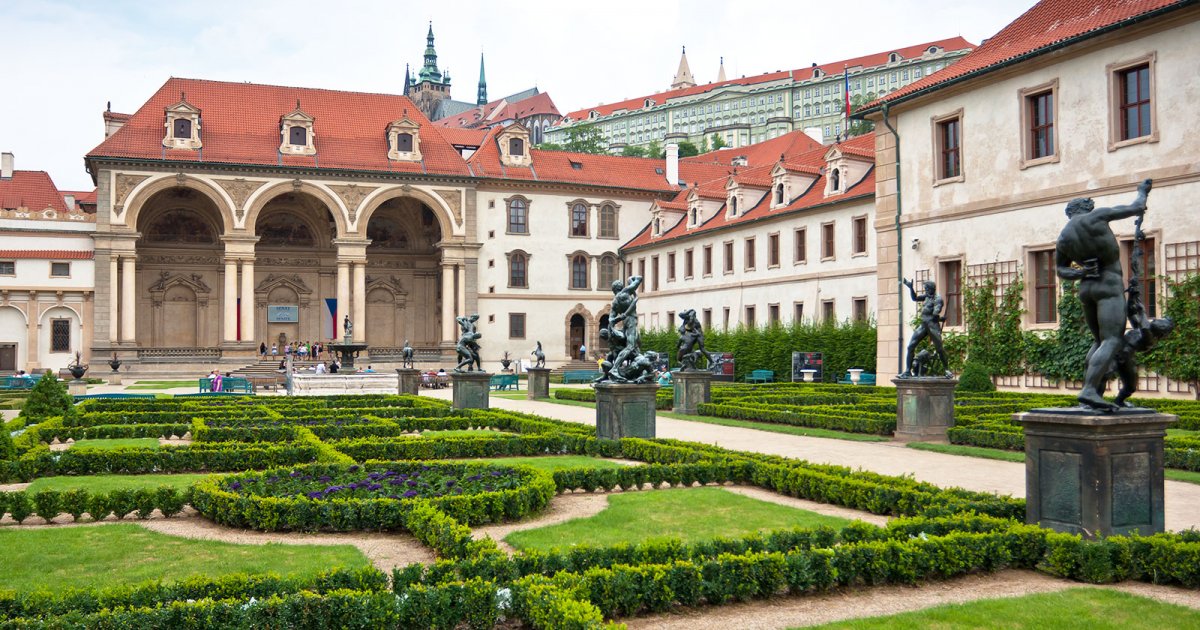MALA STRANA, Palaces
 Language: English / USA
Language: English / USA
Overlooking the rooftops of Malà Strana is the imposing Castle, with its long façades topped with spires and the delightful Gothic top of the cathedral.
The presence of the royal and imperial palace led many noble families – especially in the 16th and 17th centuries – to build their homes along the hillsides in order to be near the court, and the slope of the ground allowed them to create charming terraces and gardens, many of which are now open to the public.
The gardens feature flowerbeds in bloom, alternating with rare species, fruit trees and decorations that bring the splendor of the Bohemian noble classes back to life.
Two streets – the broad Nerudova Street and Vlasska Street, which runs parallel to it, start out from the heart of Malà Strana and climb up to the Royal Canonry of Premonstratensians at Strahov.
From the crowded square, dominated by the spectacularly imposing Baroque Church of Saint Nicholas, the route climbs up among the opulent palaces of the important families of the Central European aristocracy, designed by Italian, German and Bohemian architects.
As you make your way up, the architecture becomes simpler, with the solemn façades giving way to simple country walls, votive shrines and vegetable gardens, as you might find alongside a path running through the fields.
Once of the most striking noble buildings in Malà Strana is the magnificent Baroque palace of Prince Albrecht von Wallenstein, supreme commander of the imperial army during the Thirty Years’ War. Built in the early decades of the 17th century by Italian architects, the palace is famous above all for its splendid garden, accessible from a loggia with large arches. At the bottom is the huge building that once hosted the stables, which has now been turned into a venue for art exhibitions. The paths through the garden and the artificial grotto are decorated with copies of the bronze statues by the Flemish sculptor Adriaen De Vries; the originals were moved to Stockholm during the sacking of Prague by the Swedish army during the Thirty Years’ War.
An interesting fact: many think that Nerudova Street is dedicated to the Chilean poet Pablo Neruda, who won the Nobel Prize in 1971. The South American writer’s real name was actually Ricardo Reyes Basoalto, and he chose his pen name in honor of the Bohemian poet Jan Neruda, who lived in this very street in Prague in the mid-nineteenth century.



